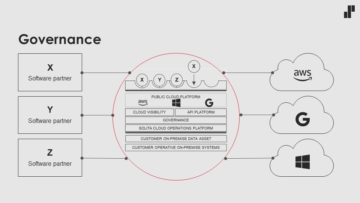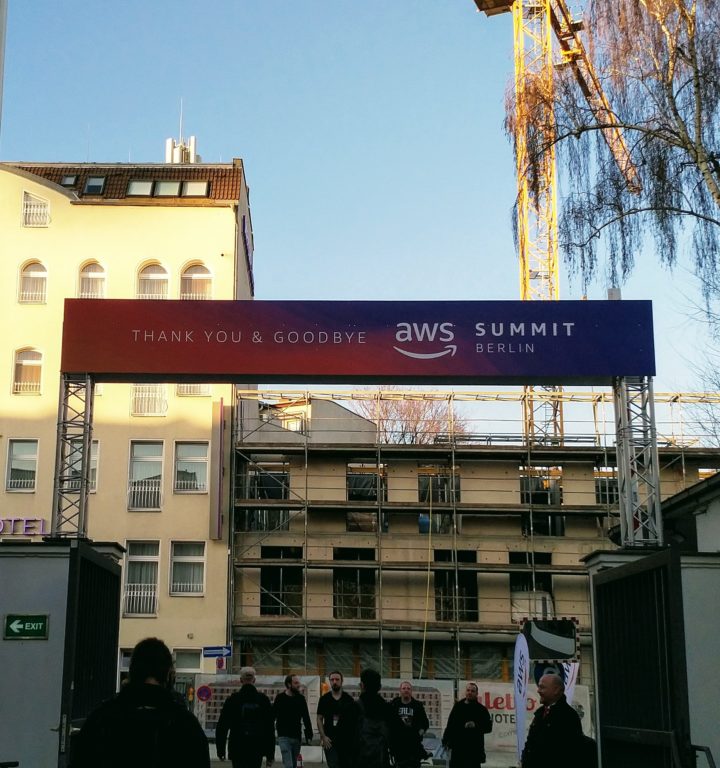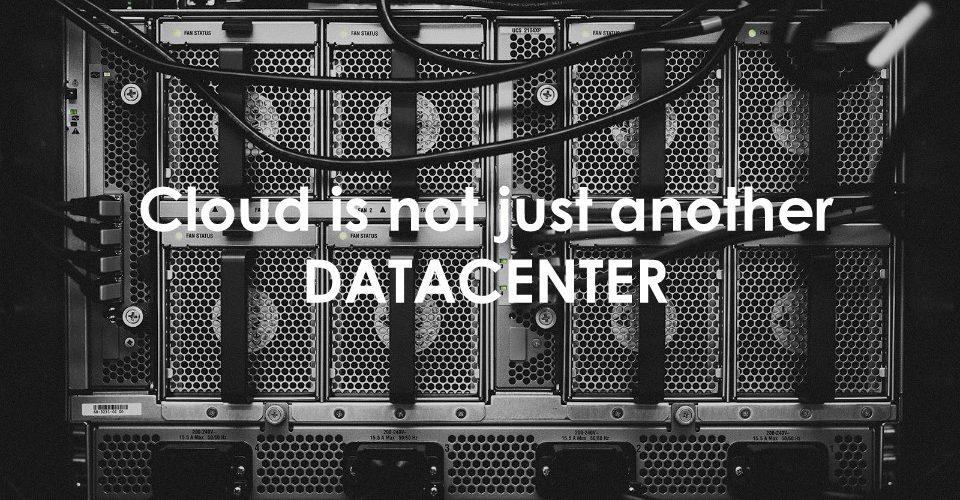Below, there are three important tips that will help you reach a good outcome.
1. Start by defining a cloud strategy and a cloud governance model
We often discuss with our customers how to manage, monitor and operate the cloud and what things should be considered when working with third party developers. Many customers are also interested to know what kinds of guidelines and operating models should be determined in order to keep everything under control.
You don’t need a big team to brainstorm and create loads of new processes to define a cloud strategy and update governance models.
To succeed in updating your cloud strategy and governance model, you have to take a very close look at things and realise that you are moving things to a new environment that functions differently from traditional data centers.

So it’s important to understand that for example software projects can be developed in a completely new way in the cloud with multiple suppliers. However, it must be kept in mind that this sort of operation requires a governance model and instructions on what kind of minimum requirements the new services that are to be linked to the company’s systems should have and how their maintenance and continuity should be taken care of. For instance, you have to decide how you can ensure that cloud accounts, data security and access management are taken care of.
2. Insist on having modern cloud operation – choose a suitable partner or get the needed knowhow yourself

Successful cloud transformation requires right kind of expertise. However, traditional service providers rarely have the required skills. New kinds of cloud operators have emerged to solve this issue. Their mission is to help customers manage cloud transformation. How can you identify such operators and what should you demand from them?
The following list is formed on the basis of views presented by Gartner, Forrester and AWS on modern operators. When you are looking for a partner…
- demand a strong DevOps culture. It forms a good foundation for automation and development of services.
- ensure cloud-native expertise on platforms and applications.It creates certainty that an expert who knows the whole package and understands how applications and platforms work together is in charge of the project.
- check that your partner has skills in multiple platforms. AWS, Azure and Google are all good alternatives.
- ask if your partner masters automatic operation and predictive analytics. These skills reduce variable costs and contribute to quick recovery from incidents.
- demand agile operating methods, as well as transparency and continuous development of services. With clear and efficient service processes, cost management and reporting are easier and the customer understands the benefits of development.
Solita’s answer to this is a modern cloud operation partnership. In other words, we help our customers create operating models and cloud strategies. A modern cloud operator has an understanding of the whole package that has to be managed and helps to formulate proper operating models and guidelines for cloud development. It’s not our purpose to limit development speed or opportunities, but we want to pay attention to things that ensure continuity and easy maintenance. After all, the development phase is only a fraction of the whole application life cycle.
The developer’s needs are taken into account, and at the same time, for instance the following operating models are determined: How are cloud accounts created and who creates them? How are costs monitored? What kind of user rights are given and to whom? What sort of development tools are used or what targets should be achieved with them? We are responsible for deciding what things are monitored and how.
In addition, the right kind of partner knows what things should be moved to the cloud in the first place.
When moving to cloud, the word move doesn’t fit very well in this context because it is rarely recommended just to move workloads. That is why it’s better to talk about transformation, which means transforming an existing worksload at least with some modifications towards cloud native.
In my opinion, application development is one important skill a modern cloud operator should master. Today, the cloud can be seen as a platform where different kinds of systems and applications are coded. It takes more than just the ability to manage servers to succeed in this game. Therefore, DevOps culture determines how application development and operation work together. You have to understand how environments are automated and monitored.
In addition to monitoring whether applications are running, experts are able to control other things too. They can analyse how an application is working and whether it is performing effectively. A strong symbiosis between developers and operators helps to continuously develop and improve skills that are needed to improve service quality. At best, this kind of operator can promise their customers that services are available and running all the time, and if they are not, they will be fixed at a fixed monthly charge. The model aims to minimise manual operation and work that is separately invoiced per hour. For instance, the model has allowed us reduce our customers’ billable hours by up to 75%.
With the addition of knowledge on the benefits and best features of different cloud services, as well as capacity use and invoicing, you get a package that serves customers’ needs optimally.
3. Don’t try to save in migration! Make the implementation project gradual

Lift & shift type transfers, i.e. moving old environments as they are, don’t generate savings very often. I’m not saying that it couldn’t happen, but the best benefits are achieved by looking at operating models and the environment as a whole. This requires a comprehensive study of the things that should work in the cloud and how the application is integrated in other systems.
The whole environment and its dependencies should be analysed, and all services should be checked one by one. After that you plan migration, and it is time to think what things can be automated. This requires time and money.
A migration that leads to an environment that has been automated as much as possible is a good target. It should also lower recurrent costs related to operation and improve the quality of the service.
Solita offers all services that are needed in cloud transformation. If you are interested in the subject, read more about our services on our website. If you have any questions, please feel free to contact us!















